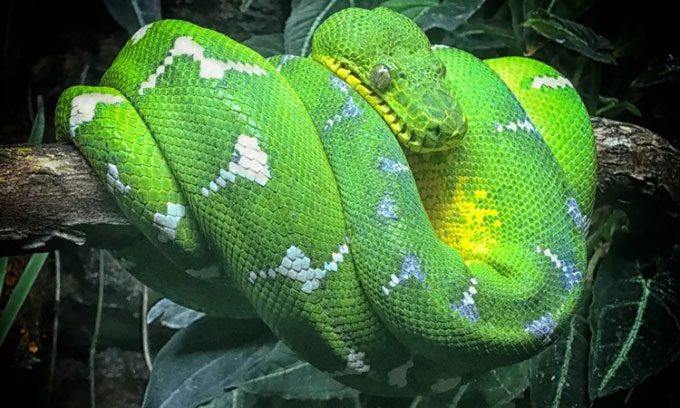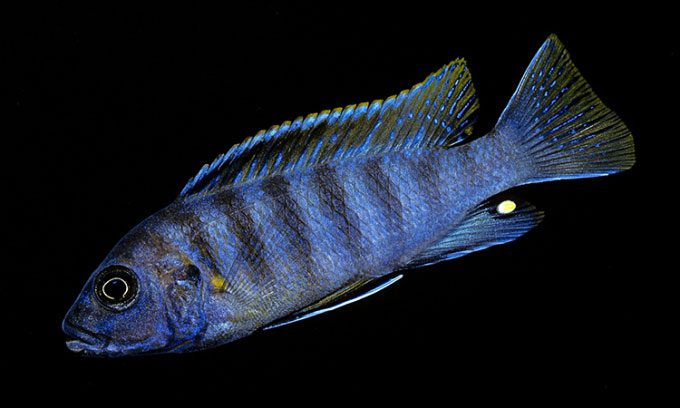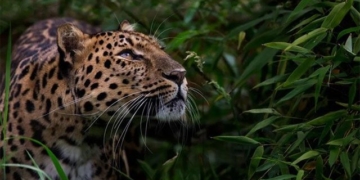The evolutionary process among vastly different life forms spans a time frame observable by humans to tens of millions of years.
Today, Earth is estimated to host around one trillion species. How long did it take for these species to evolve? The answer varies significantly depending on the taxonomic level and environmental conditions, according to Professor of Ecology and Evolutionary Biology Thomas Smith at the University of California, Los Angeles, in an interview with Live Science.

Corallus caninus, a species in the Boidae family believed to have evolved over tens of millions of years. (Photo: WMay)
This is because evolution occurs through genetic changes, the reproductive rates of organisms, or generation times, as well as the limits on the speed of new species formation.
For example, bacteria reproduce very quickly, splitting every few minutes or hours by doubling their cells, allowing them to evolve into new strains within a few years or even days, according to the American Museum of Natural History in New York.
However, determining which strains constitute new species is not straightforward, Smith notes. Typically, scientists identify species by whether they can interbreed and produce offspring, but bacteria do not reproduce sexually.
A study published in Proceedings of the Royal Society in 2008 showed that a strain of E. coli developed the ability to utilize citrate as a food source in an oxygen-rich environment. Researchers indicated that one defining characteristic of E. coli as a species is its inability to do this, so the change may represent the beginning of a new species, one that evolved within a few years.
Plants can undergo a phenomenon called polyploidy, where they can double their entire gene set in seeds, resulting in additional copies of every chromosome and creating new species in a single generation. Reproductive isolation will automatically lead to the formation of a new species.
Even in the animal kingdom, identifying new species can occur within a time frame observable by humans, particularly for rapidly reproducing insect species.
For instance, the apple maggot fly (Rhagoletis pomonella) used to primarily feed on hawthorn trees, but some began feeding on domesticated apples after they arrived in North America in the mid-1800s. Since then, the two groups have become reproductively isolated – the first step towards forming a new species, according to a 2006 study published in the Annals of the Entomological Society of America.
Vertebrate species typically evolve more slowly, but there are exceptions. A 2017 study in Science reported that a Galapagos finch flew to a new island and interbred with a native bird, creating a new reproductively isolated strain within three generations. Co-author Leif Andersson, a geneticist at Uppsala University in Sweden, stated that this strain might represent the rapid onset of speciation through hybridization rather than the accumulation of mutations.

Emperor cichlid Aulonocara nyassae. (Photo: Paul Starosta)
The record for the fastest formation of new species among vertebrates belongs to the emperor cichlid in Lake Victoria, Africa. These fish exploded into 300 species from a single ancestor in less than 12,000 years, according to a study published in Proceedings of the Royal Society B in 2000.
Meanwhile, the Boidae family (primarily found in the Americas) and Pythonidae (originating from Africa and Asia) were differentiated after South America separated from Africa. Smith noted that this could represent tens of millions to 100 million years of evolution since the continents split until complete formation, according to the Australian National University.
Determining the average rate of new species formation is a challenge. A study published in Molecular Biology and Evolution in 2015 provided an estimate. Based on data from over 50,000 species (of which only a few are bacteria), scientists found that identifying new species often requires the accumulation of mutations over more than 2 million years. This is true for vertebrates, arthropods (a group that includes insects, spiders, and crustaceans), and plants.


















































